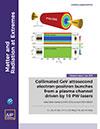
极端条件下的物质与辐射(英文)(Matter and Radiation at Extremes) 万方维普知网目次
- CSCD
- 高T1
- EI(中国2024)
- 主管单位:
中国工程物理研究院
- 主办单位:
中国工程物理研究院科技信息中心
- 国际刊号:
2468-2047;EISSN2468-080X
- 国内刊号:
51-1768/04
- 学科分类:
- 字数:
6000-32000
- 有无基金:
/有基金 100.0%
- 周期:
CN外文-双月刊
- 特殊属性:
外文期刊,第二批认定学术期刊
- 电话:
0816-2483833
- 邮箱:
mre-edoffice@aip.org(官网邮箱)
- 复合因子:
0
- 综合因子:
0
- 收录:
万方,维普,知网目次
- 级别:
CSCD,高T1,EI(中国2024)
期刊简介
《极端条件下的物质与辐射》期刊已被查看: 次
更新频次
单位占比
一作占比
/有基金-100.0%投稿指南
1、投稿方式:在线投稿。
2、刊内网址:https://pubs.aip.org/aip/mre(202306期)
3、投稿系统:
https://mre.peerx-press.org/cgi-bin/main.plex
4、主管单位官网:https://www.caep.ac.cn/kjkw/kjqk/
5、出刊日期:双月刊,逢单月15日出版。
2024年3月7日星期四
《极端条件下的物质与辐射(英文)》投稿须知
【官网信息】
Preparing Your Manuscript
Author Instructions
Acceptable file formats
Please use Microsoft Word or LaTeX.
Use of the following brief guidelines will help you to ensure prompt error-free publications that precisely reflect your intent.
Equations need to be editable so we recommend that you create them with the built-in Microsoft Equation Editor included with your version of Word. If you wish to use Mathtype, check for compatibility at http://tinyurl.com/lzny753.
Users of the Windows version of Word: Please embed all fonts.
Users of Macintosh Word: Please save all files in DOCX format, as the use of DOC is not supported. Additionally, because font embedding is not possible, Mac Word users should limit their font selection to those available from the basic installation.
Tablesshould be created with Word’s Insert Table function and placed within your paper. If the table has already been made, please be sure it has been made with Word’s Table features. Tables created with spaces or tabs will create problems and may be improperly typeset. To ensure your table is published as you wish, you must use Word’s Table function.
Footnotes should be inserted using Word’s Insert Footnote
LaTeX
AIP Publishing has made a formatted template available in Overleaf. For best results and full support, we recommend that you use the AIP Publishing template in Overleaf. Authors may download either the PDF template (best for initial submissions) or a .zip file containing the template which can then be uploaded into the AIP Publishing submission system.
Support
Support with using the AIP Publishing template is provided by Overleaf. If you are having LaTeX issues and did not use the provided template, please upload your project files into the AIP Publishing template in Overleaf. If you choose not to use this template, you can seek outside support from community-based help forums, such as tex.stackexchange.com or http://latex.org/forum/.
Submission Guidelines
For initial Submissions,
Submit a single compiled main manuscript PDF.
Include Supporting information (SI) at the end of the main manuscript PDF or as a separate SI Appendix PDF, if part of your article.
Manuscript Guidelines
These are the general guidelines for the AIP Publishing journals. However, in addition to these guidelines, if you are preparing a manuscript for AIP ADV: MMM, APL, APM, APP, BMF, CHA, JCP, JCPRD, PoF, PoP, RSI, or SDY there are specific requirements which only apply to each particular journal. Therefore, it is important to also carefully read the specific journal guidelines after reading these general guidelines.
The manuscript, including the abstract, references, and captions should be set up on a 21.6 X 28 cm (8 X 11 in. or A4) grid with ample margins. It is essential that the motivation for the research presented, central results, and conclusion be stated in nontechnical language that is intelligible to a broad audience. The manuscript must be in good scientific American English. All pages need to be numbered consecutively.
The manuscript should be arranged in the following order: title, author(s), affiliation(s), abstract, text, acknowledgments, appendixes, and references. Figures, with figure captions, may be embedded within the manuscript to assist the reviewers. In addition, please submit separate figure source files.
Series publications should be submitted in sequential order (Part I or I, Part II or II, etc.) and properly identified in the references. For series publication of closely related papers, the descriptor “Part I,” or simply “I” will not be included in the title of an article unless Part II has been submitted for publication in the journal.
The abstract should serve as an index (including all subjects, major and minor, about which new information is given) and as a summary (presenting the conclusions and all results of general interest in the article). It should be one paragraph with approximately 250 words. The abstract should not contain displayed mathematical equations, footnotes, references, graphics, or tabular material.
Authors’names should be presented consistently across all publications to facilitate indexing and avoid ambiguity.
You may choose to have your Chinese, Japanese, or Korean names published in your own language alongside the English versions in the author list. For Chinese, you may use either Simplified or Traditional characters. Chinese, Japanese, or Korean characters must appear within the author list of the manuscript when you are submitting and resubmitting the article. For further information, please read the Guidelines for Chinese, Japanese, or Korean names below.
Equations should be punctuated and aligned to bring out their structure and should be numbered on the right. Mathematical operation signs indicating continuity of the expression should be placed at the left of the second and succeeding lines. Use “x” rather than a center dot, except for scalar products of vectors. The solidus (/) should be used instead of built-up fractions in running text and in display wherever clarity would not be jeopardized. Use “exp” for complicated exponents.
Notation must be legible, clear, compact, and consistent with standard usage.
Footnotes to the title should be set as a “Note” above the byline footnotes. For footnotes to the bylines, use a), b), c), etc. Avoid textual footnotes by inserting the information in the text. Footnotes within tables should be designated by lowercase roman letter superscripts and given at the end of the table.
References should be set as a double-spaced list at the end of the text. The names, including initials, of all authors in each reference should be given (in the text, the use of et al. is permitted). All references to books and journal articles, listed at the end of the paper, are to appear in the following formats:
By number, in order of first appearance, presenting the names of the authors, the title, the journal name, volume, first page number only, and year, as in:
19L. M. Pecora, T. L. Carroll, G. A. Johnson, D. J. Mar, and J. F. Heagy,Fundamentals of synchronization in chaotic systems, concepts, and applications, Chaos 7, 520 (1997).
This paper will be listed as the 19th in the list of references and cited as 19 or Ref. 19 in the body of the paper.
Tables must be placed within the text of your paper and numbered with roman numerals in the order of appearance. They should be used for all but the simplest tabular material and contain captions that make the tables intelligible without reference to the text. The structure should be clear, with simple column headings denoting all units. Unaltered computer output and notation are generally unacceptable.
Preparing Graphics
Guidelines
If you embed figures in place in your article-text file, you will be asked to upload individual figure files should your paper be accepted for publication.
Number figures in the order in which they appear in text.
Identify all figure parts with (a), (b), etc.Avoid any large size differences of the lettering and labels used within one illustration.
Submit illustrations in the size and resolution you wish them to appear in print.
For ADV, APL Bioengineering, APL Materials, APL Photonics, BMF, JRSE, and SDY
The maximum published width of figures is 5 3/8 inches (13.3 cm). The maximum depth of figures should be 8 ¼ in. (21.1 cm). Legends or labels within figures should be a minimum of 8-point type size (2.8 mm high; 1/8 in. high). A minimum of 0.5 point width for lines.
For JMP (one-column journal)
The maximum published width of figures is 6.69 inches (17 cm).
For APL, APR, CHA, JAP, JCP, JLA, JPCRD, MRE, PoF, PoP, and RSI
The maximum published width for a one-column figure is 3.37 inches (8.5 cm). The maximum width for a two-column figure is 6.69 inches (17 cm). Each illustration should be prepared for 100% reproduction to avoid problems arising from large reductions in size.
Ensure that lettering and lines are dark enough and thick enough to reproduce clearly, especially if reduction is necessary. Remember that fine lines tend to disappear upon reduction.
IMPORTANT: All fonts must be embedded in your figure files.
For figure creation or figure redrawing services, see how we can help at
https://authorservices.aip.org/services_pricing
Electronic graphic formats
Use only these file formats: EPS (preferred format), PS, TIFF (.tif), PDF, JPEG (.jpg). Application files (e.g., Corel Draw, Microsoft Word) are not acceptable.
Scalable vector formats (i., SVG, EPS, and PS) are greatly preferred. AIP Publishing suggests the use of Adobe Illustrator (Paid, OS X, Windows) or Inkscape (Freeware, OS X, Windows, Linux) for the creation of acceptable illustrations and Adobe Photoshop (Paid, OS X, Windows) or GIMP (Freeware, OS X, Windows Linux) for the editing of acceptable photographs.
Submit a single file for each figure with figure parts; label each part (a), (b), etc.
When submitting your manuscript, include all illustrations and line art for your paper.
Set the correct orientation for each graphics file.
Set the graphic for:
Line art: 600 dpi resolution and black/white bitmap, not grayscale.
Halftones: 264 dpi and grayscale, not black/white bitmap.
Combinations (line art and halftone):600 dpi for and grayscale, not black/white bitmap.
Color online: 300 dpi TIFF, PS, or EPS format. If selecting a file mode, use RGB (red, green, blue).
Production-ready PDF graphics
For accepted manuscripts, PDF as the source file for illustrations is not preferred. However, properly prepared PDF illustration files may be used in the production process of your accepted manuscript if you follow these guidelines:
PDF should only be used as the source file for illustrations when the preferred formats (PS, EPS, or TIFF) cannot be generated.
In the PDF illustration, the resolution of any shaded or photographic images must be 600 pixels per inch (PPI).
Within the PDF illustration, resolution of line art with no shading should be 1200 pixels per inch (PPI).
All fonts must be embedded in the PDF.
When creating a PDF through your application's print command, select "High Quality Print."
上一篇:纳米材料科学(英文版)(Nano Materials Science)(原:重庆大学学报(英文版)(Journal of Chongqing University)(English Edition))下一篇:光子传感器(英文版)(Photonic Sensors)
《极端条件下的物质与辐射》同类物理期刊
-
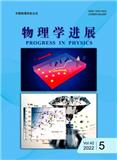
物理学进展(不收版面费审稿费)
北核,武A
CN中文-双月刊影响因子0.368
-
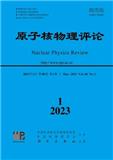
原子核物理评论
北核,科核,CSCD扩,高T3
CN中文-季刊影响因子0.365
-

波谱学杂志
科核,武A-
CN中文-季刊影响因子0.935
-
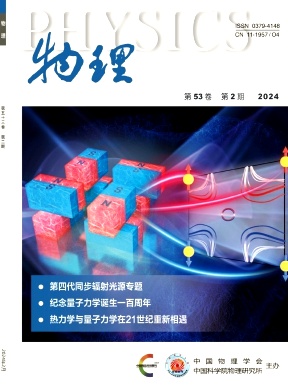
物理
北核,武B+
CN中文-月刊影响因子1.153
-
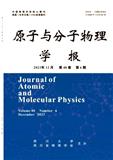
原子与分子物理学报
北核,武B+
CN中文-双月刊影响因子0.667
-
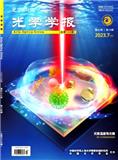
光学学报
北核,CSCD,科核,武A+,高T1,EI(中国2024)
CN中文-半月刊影响因子2.91
-
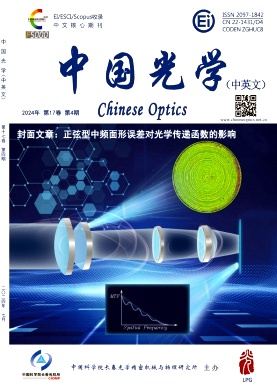
中国光学(中英文)(原:中国光学与应用光学)
北核,CSCD,科核,武A,高T2,EI(中国2024)
CN中文-双月刊影响因子2.336
-
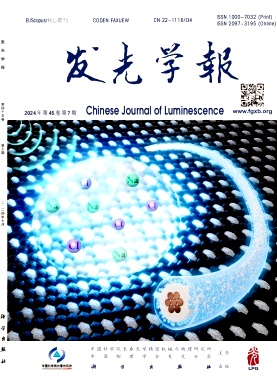
发光学报
北核,CSCD,科核,武A,高T2,高T3,EI(中国2024)
CN中文-月刊影响因子1.356
常见问题
-
极端条件下的物质与辐射杂志社官网、联系方式是什么?
极端条件下的物质与辐射杂志社官网:https://pubs.aip.org/aip/mre
投稿网址:https://mre.peerx-press.org/cgi-bin/main.plex联系电话:0816-2483833
投稿邮箱:mre-edoffice@aip.org(官网邮箱) -
极端条件下的物质与辐射杂志是核心期刊么?
极端条件下的物质与辐射是核心期刊,级别是:CSCD,高T1,EI(中国2024), 是:物理分类下的万方,维普,知网目次收录的期刊。
-
请问你们是极端条件下的物质与辐射杂志社吗?
我们不是《极端条件下的物质与辐射》杂志社。本站主要从事期刊信息展示与期刊推荐,不是任何杂志官网,直投稿件请联系杂志社。本站仅提供免费的学术指导、论文辅导、期刊投稿信息整理收集服务。
-
你们指导服务后可以保证文章被发表吗?
期刊发表的成功与否,主要取决于文章内容的质量。编辑老师会根据研究领域、创新性等多因素进行考量。我们会帮助您理解期刊的发表要求,助力提升发表几率,从而增加发表的机会。
-
晋级论文能否在报纸上发表?
在学术界,论文的发表往往被视为研究者职业发展的重要一环。晋级论文,即为了获得更高职称或学术地位而撰写的学术论文,通常需在专业期刊上发表。然而,许多人可能会问
